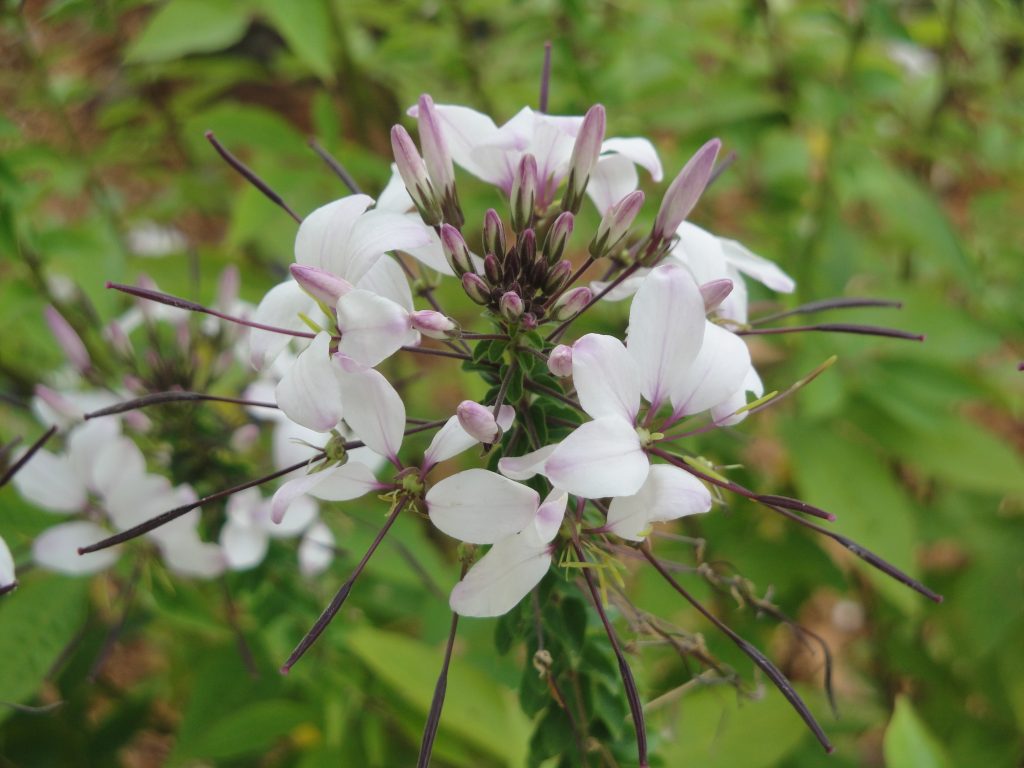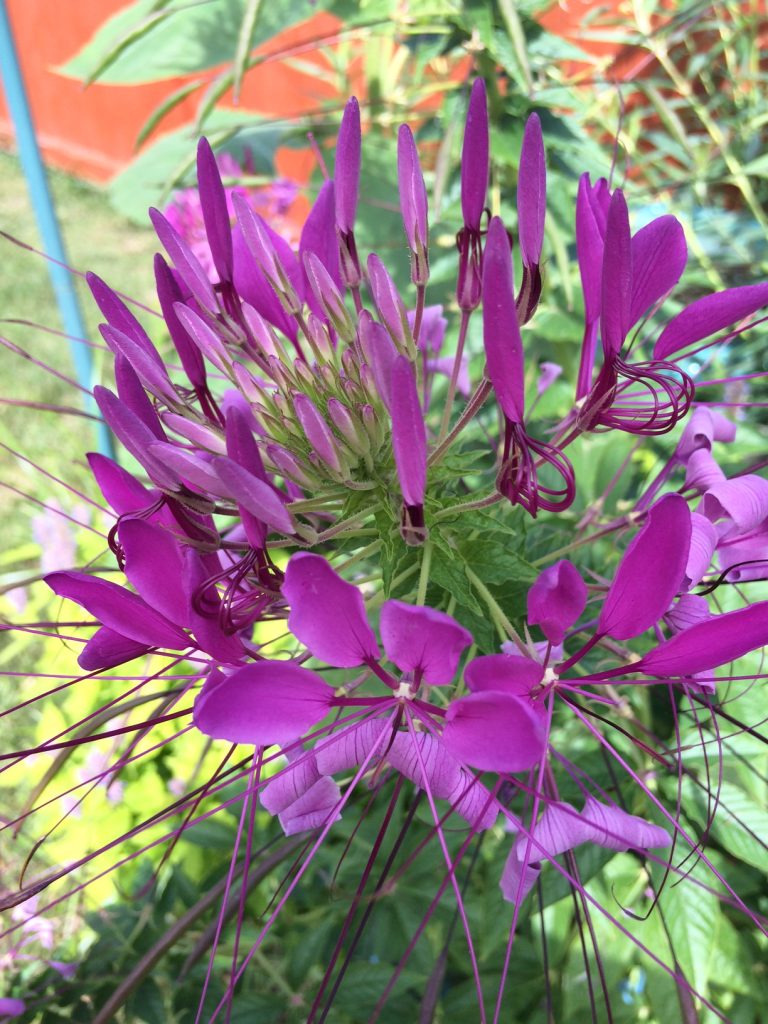Plant Profile: Cleome
A few years ago, I was bored with my usual annual flowers. That’s when I heard about cleome, a tall, striking annual with a puff-ball flower and a distinctive smell—some people like it, some not so much.

Cleome is large enough to look almost like a shrub, similar to a hydrangea, with blooms that last just as long and are just as striking. It can grow from 3 to 6 feet tall and 1 to 3 feet wide. It begins flowering in late June or early July and flowers continuously, with new blooms forming along the same stem as the old ones. Because the new blooms form on top of the old ones, the plants require no deadheading. Cleome is sometimes called spider plant because of the seed pods that dangle down from blooms.
Though its tall, floriferous and easy to grow, cleome has not always been a popular choice. Old-fashioned varieties tended to reseed themselves prolifically, have sharp thorns along the stem after flowers bloomed, a sticky ooze from the leaves and a scent that some people described as skunk-like.

Newer varieties have addressed these issues. Plant company Proven Winners has two lines of cleome that are spineless. Spirit™ cleome comes in Violeta, Frost and Appleblossom. It retains the distinctive scent (which I like) and grows fairly tall. I have both Violeta and Frost in my front garden and they are a show stopper. If you do not like the scent and want a more diminutive choice, Proven Winners has the Senorita cleomes. Senorita Rosalita™ is a pink-flowered cleome that is thornless, stinkless and sterile. Senorita Blanca™ is a white-flowered variety that grows 3 to 5 feet tall.
I’ve grown the senoritas, too, in pots, and thought they were fantastic. In my containers, they grew about 3 feet tall and bloomed for weeks and weeks.
This plant does best in full sun and it needs to be watered in dry weather, something I have not had to do this year. In containers, I fertilize mine lightly every three weeks, but they would not need that much in the ground. While some disease problems have been reported in the South on these plants, they seem to be fairly easy care and healthy here.
Which unusual annuals do you like best?
Mary Lahr Schier is a longtime Minnesota garden writer.


I’m a fan of South African Foxglove. Graceful and beautiful, but surprisingly hardy.
I am used to the cleome gynandra which is common in Southern Africa. It is also a very popular indigenous vegetable and one of my favorites. Since I moved to Canada I found the North American cleome and I bought 6 plants for my garden. Very excited and will have seeds from them too. I am also going to try cooking the leaves. I hope they taste good as the cleome gynandra.
Has anyone ever tried cooking the leaves. Would love to know.
I have a fairly large area that I need to grow these plants that come up every year. The problem I see, back there, is there are rabbits. And I think during the night, deer walk through my yard and I’m not sure if they would be a problem.